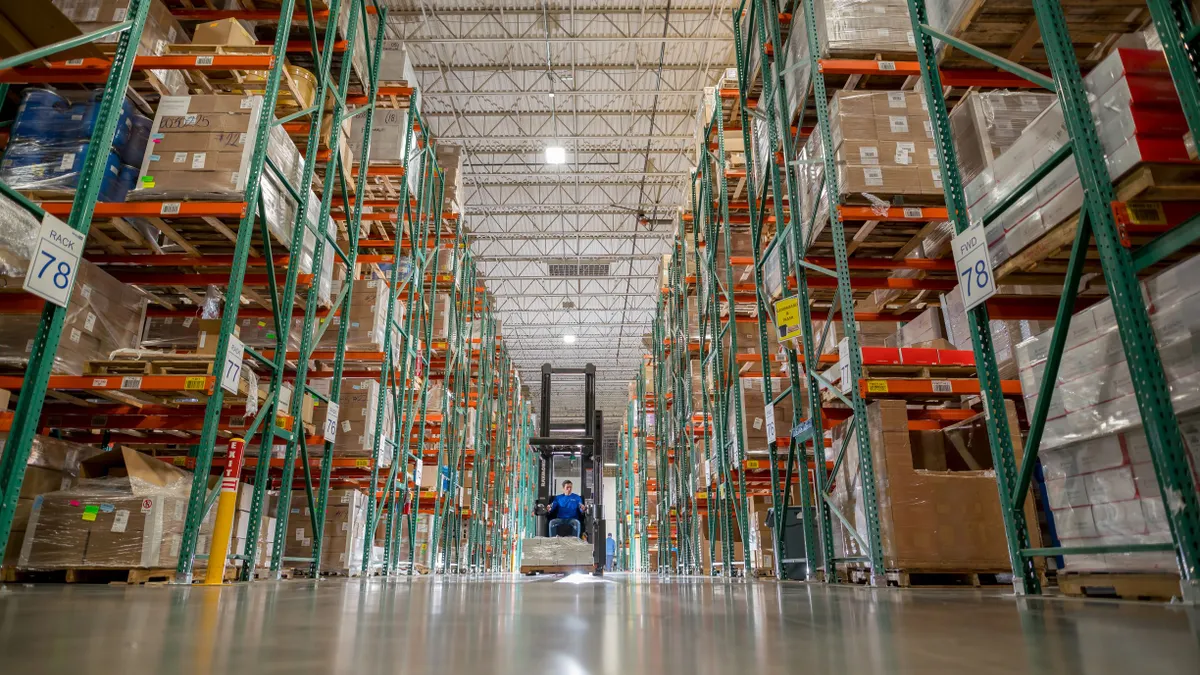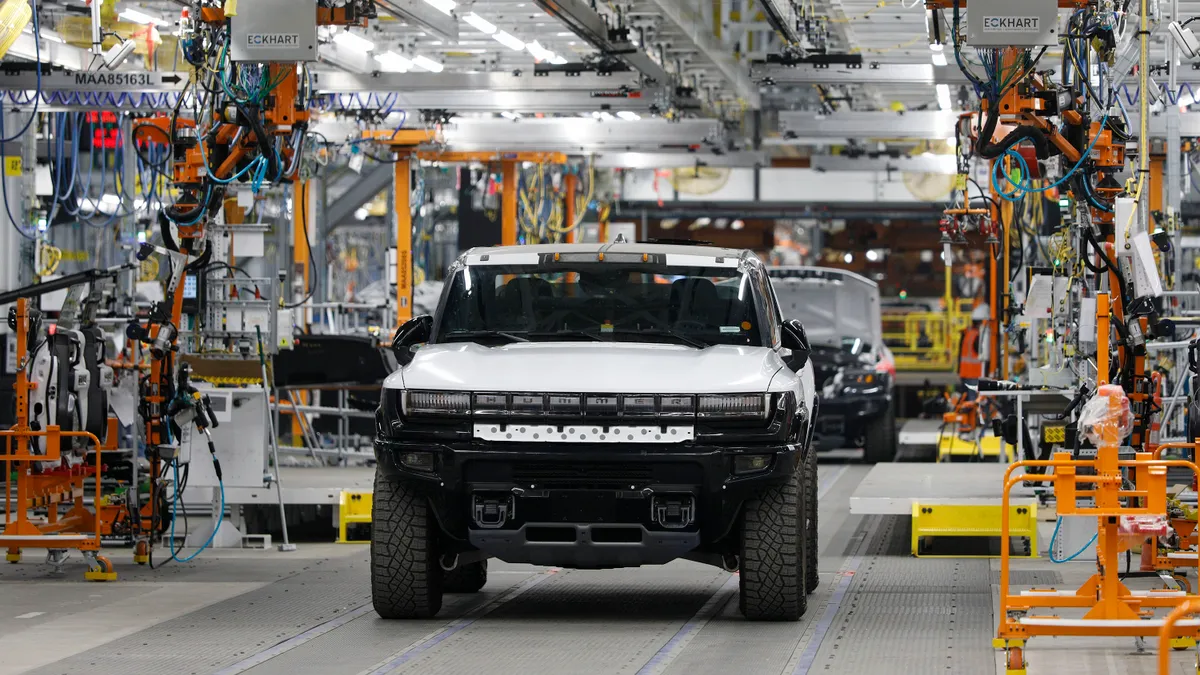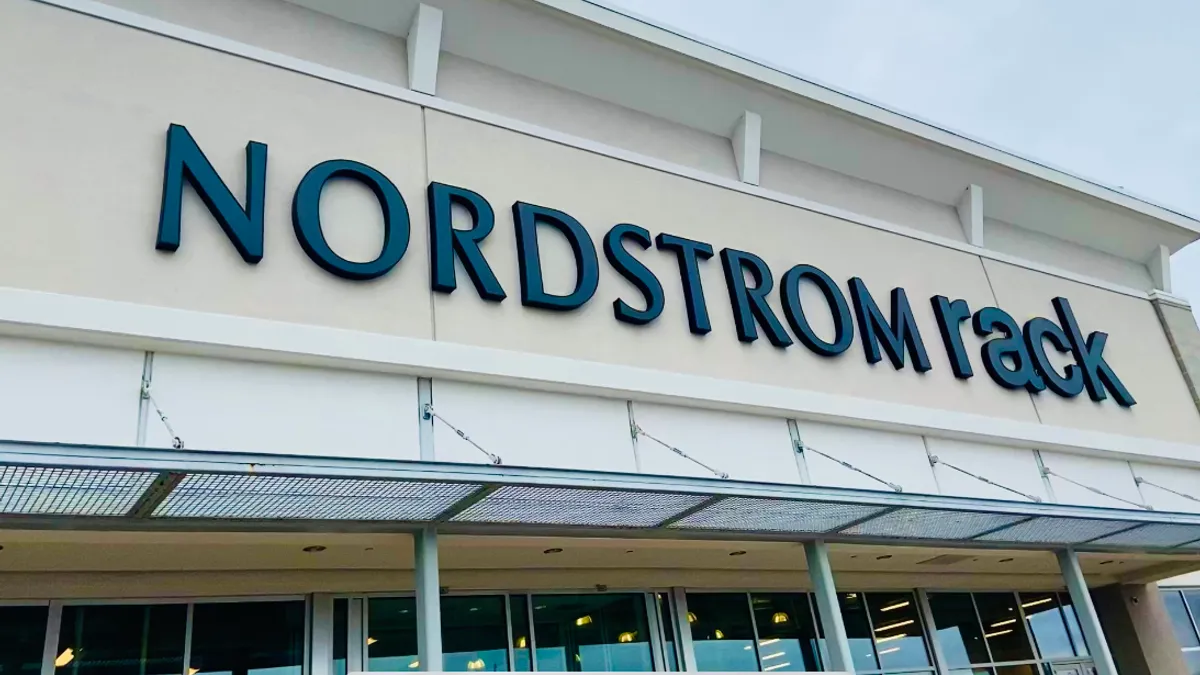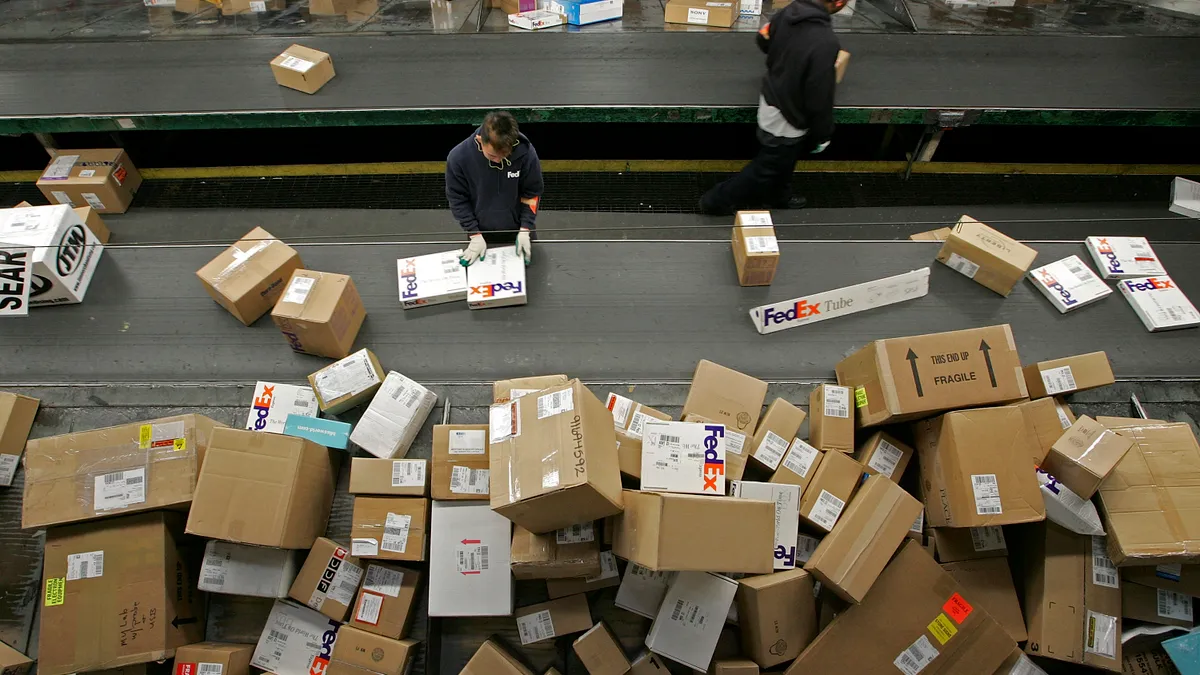Warehouse employment has reached a new high after a monthslong dip, but companies are still scrambling to keep pace with demand.
There were 1.44 million workers in the warehouse and storage industry in July, according to preliminary data from the Bureau of Labor Statistics. This surpassed the previous record high set in November and is the third consecutive month employment in the sector has grown.
The record-level employment at warehouses is the result of a rush to staff up as the COVID-19 pandemic drives up e-commerce demand.
Warehousing and storage employment more than doubles
"What it means is that instead of having 100 guys driving forklifts that have pallets around, now you've got individuals that have to do a lot of picking and packing," Rich Thompson, international director of supply chain and logistics solutions at JLL, said of the shift to e-commerce. "And that requires far more labor."
Several companies with heavy warehouse footprints reported labor pressures in the first half of 2021, as employment in the sector slumped after November 2020.
"The inability to hire team members, particularly package handlers, has driven wage rates higher and creates inefficiency in our networks as we use overtime to cover open shifts and route volume around known constraints just as a few examples," FedEx COO Raj Subramaniam said on the company's Q4 earnings call in June.
Firms are still facing hiring obstacles today, as pandemic-related health concerns, a lack of affordable childcare and more generous unemployment benefits have been cited as factors keeping people out of the labor force.
On Sysco's Aug. 10 earnings call, CEO Kevin Hourican said the company has "hotspots around the country that present challenges" in staffing for warehouse and driver positions. US Foods still has work to do to get warehouse and driver staffing to match demand, CFO Dirk Locascio said during its Aug. 9 earnings call.
Major retailers like Costco, Walmart and Target have raised hourly wages during the pandemic, and warehouse workers have taken notice, adding further pressure on the industry, according to Raj Patel, senior director of 3PL global industry strategy at Blue Yonder.
"A lot of the folks that had left ... are saying, 'Why would I go make $16 an hour in a hot warehouse, when I can make $15 at Costco?'" Patel said.
Warehouse employers are responding to the shortage in a variety of ways. One way is to raise wages: The preliminary average hourly earnings in the industry was $22.47 in June, up from $21.99 in March, according to the BLS. Amazon moved up its annual wage increase from October to May, CFO Brian Olsavsky said on the company's Q2 earnings call.
"We're spending a lot of money on signing and incentives, and while we have very good staffing levels, it's not without cost," Olsavsky said. "It's a very competitive labor market out there and certainly, the biggest contributor to inflationary pressures that we're seeing in the business."
Beyond wage increases, some companies are offering more flexibility in shifts and allowing paid time off to be taken in smaller increments than a day or half-day, said Michael Mikitka, executive vice president of the MHI Knowledge Value Center and Warehousing Education and Research Council.
Another approach is investing more in the employees already there and maximizing their productivity. According to a survey this year from Reuters Events and Blue Yonder, 62% of supply chain professionals in retail and manufacturing are deploying warehouse labor management systems. These systems help dictate targets for picks per hour, receiving per hour and other metrics, which motivates employees to reach those goals, Patel said, adding that the pandemic has accelerated their adoption.
In some warehouses, robots are taking on more of the work. Pitney Bowes is installing automated parcel sorting systems from Ambi Robotics in its e-commerce hubs, which will help it increase sortation speeds and help current employees as labor costs rise, CFO Ana Maria Chadwick said on the company's Q2 earnings call. DHL is using more Locus Robotics assisted picking robots to bring items to human pickers, reducing the time employees spend walking and increasing the time they spend picking items.
Robotics adoption isn't widespread — in MHI's annual report, the percentage of supply chain and manufacturing leaders reporting they were using automation and robotics was 38% in 2021, slightly higher than 35% of respondents in 2016. However, robotics was also one of the top three areas respondents were increasing investment in. Some companies "increased their use of automation and robotics in order to operate with fewer floor workers, helping to keep people safe and socially distant," according to the report.
Robotics have partially eased the sting of labor shortages, but the fundamental driver of warehouse employment demand is the e-commerce boom, Thompson said, which isn't going away.
"No matter how automated a facility can get or how many robots you can get working, there's still this huge surge in demand for warehouse [employment]," he said. "That's not going to change."
This story was first published in our weekly newsletter, Supply Chain Dive: Operations. Sign up here.






















